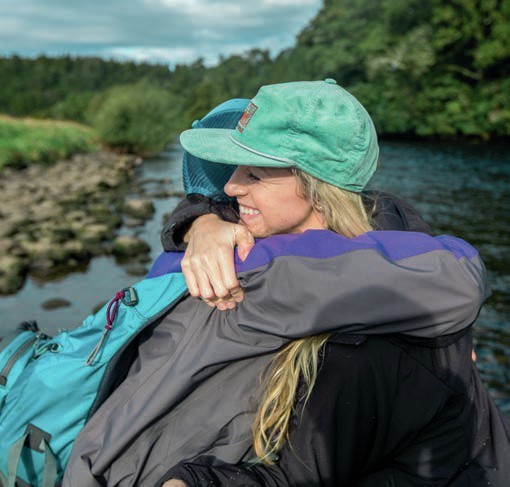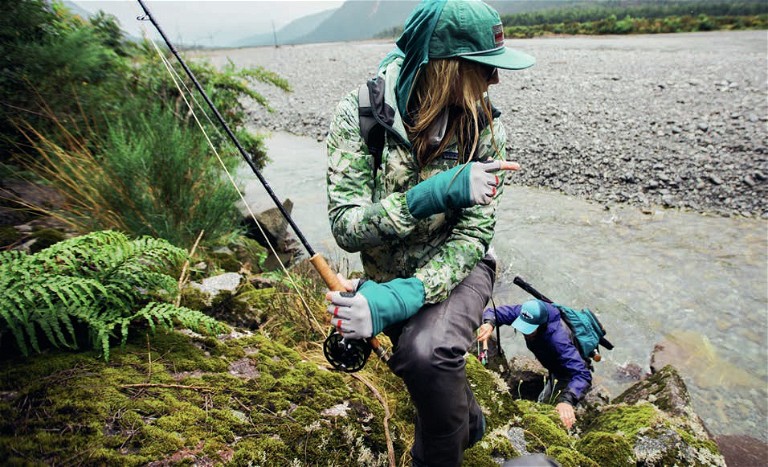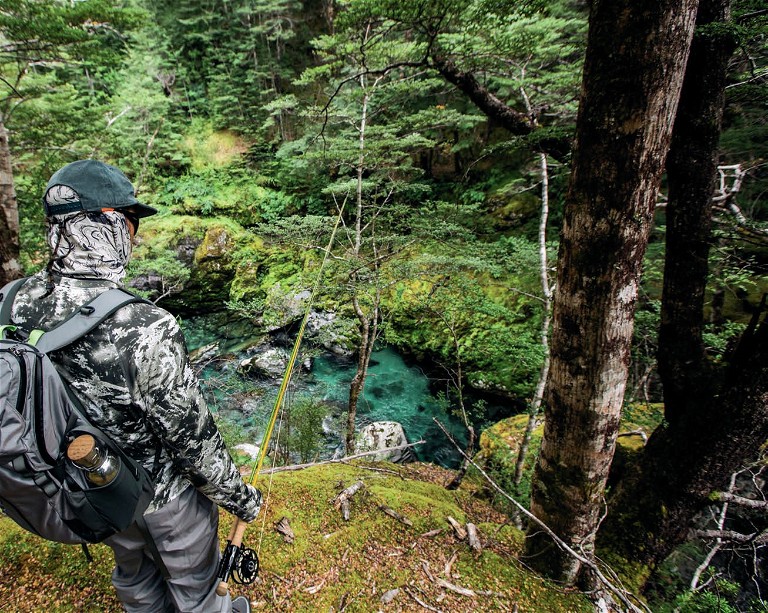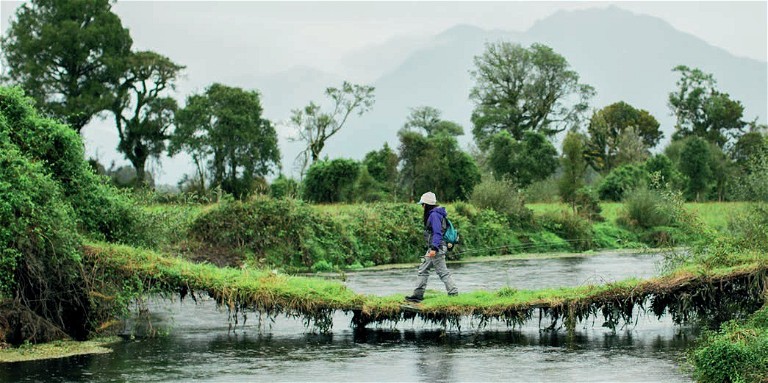NZ Fishing



Iwas warned about the South Island’s West Coast. The ‘sandfly nuisance map’ on Google images showed a sea of red along the entire left coast, and the solid purple rainfall warnings were a close match. The Kiwis I chatted with did their best to deter me from the visit, which usually means one thing – the fishing there is awesome.
I’d been counting down the days to make the trip. My good friend Tracy and her husband Matt were flying in from Montana to meet me, and we’d conjured up all sorts of plans to sightfish to trout with gaping white mouths and shoulders as broad as an eighty’s catwalk.
We’d booked a DIY trip, but we were armed with my husband’s recollections and a sketched-out map he’d drawn for our adventure. He spent a fair bit of time in the region when he was younger and was more than happy to guide us (from afar) – Iblamed his stories for my fiery urge to get down there. I’d spent my own fair share of time on both the North and South Islands, but it was my first trip out west. Being from British Columbia, I was craving a coastal fishery complete with rain, mountains, glacial rivers and Chinook Salmon. If I was ever going to feel at home in the southern hemisphere, this was the place for it.
We touched down in Wanaka to say a quick hello to our friends at the Epic factory, then we grabbed our rental and hit the road. Here are some photos that tell the story…

Top: Gurnard are suckers for an orange slider.

Photo: Grant Dixon; Bottom: The author’s favoured carrot rig – note the two sinkers to keep baits on the bottom.
or the shallower guts and flats, depending on the tide. Gurnard come right up onto the mudflats with the rising tide, so don’t be afraid to fish in just a few metres of water in the harbours.
On the east coast I prefer the current flowing, but in the west coast harbours, slack tide is best. Not only is it much easier – from a practical point of view – to fish when the current isn’t ripping past, but gurnard seem to be more active and hungrier around slack water. As an example of these factors: my favourite carrot hangout is in about 5m of water, at high tide, in a shallow gut that leads up to mudflats in the Kaipara Harbour, in the middle of winter.
Gear and techniques
Gurnard catching is not rocket science, but a few little things can increase your catch rate (and this can be important if the slack tide bite time at your spot lasts for less than an hour!).
I find light soft-baiting sets perfect for targeting gurnard in the shallows. The light braid produces less vibration in the current than thicker lines, and a sensitive tip helps you feel the often-subtle carrot nibbles. And best of all, a big carrot can pull some string from a lightweight combo, giving you some heart-inmouth excitement!
At the business end, it’s hard to go past a 5/0 recurve hook pink flasher rig. I like to tie the sinker close to the bottom hook to account for the gurnard’s mudhugging nature. If surfcasting, a breakout sinker will help keep the baits in the strike zone. But, an even better rig for boat fishing is to tie a small sinker at the base of the flasher rig and have a larger sinker sitting above the swivel.
This allows all of the baits to sit hard on the bottom in the prime carrot zone. Just watch out for tangles with this set-up when the kahawai are flowing! Although gurnard have relatively big mouths, I like using small triangles of skipjack tuna hooked through the skin once.
On their upper jaw they have a bony plate, so you don’t want to choke the point of the hook with bait and risk not being able to penetrate this. Fresh kahawai or mullet baits also work well.
A berley bag tied to the anchor chain normally helps drag in a few orange customers – just be judicious with it (on the west coast particularly) as spiny dogfish can be a nuisance. Lures also work for carrots: small soft-baits dragged along the bottom, or sliders worked slowly (or even left in the rod holder) can work fairly well.
I like to fish two rods when I’m carrot fishing to make the most of the short slack-tide bite times – one cast a bit behind the boat, and one simply dropped straight over the side. With my activelyfished rod, I like to keep a bit of slack in the line to ensure the baits stay as close to the bottom as possible and to give the fish time to suck down the bait. When you’ve had a good nibble, it is then simply a case of slowly lifting the rod to set the recurve hooks; then put the gimble on and get the flying gaff ready…
Just kidding. But once you’ve got a bunch of carrots on ice in the chilly bin, make sure to get your tastebuds ready because you’re in for a real treat. We enjoy panko-crumbed gurnard with a side of Japanese mayo the most, but if you’re willing to put in a bit of effort, the heads and frames make an amazing fish stock. This stock can be used as the base for seafood chowders to warm both you and the cockles of your heart during those long winter nights. Now, go get yourself some mighty gurnard!